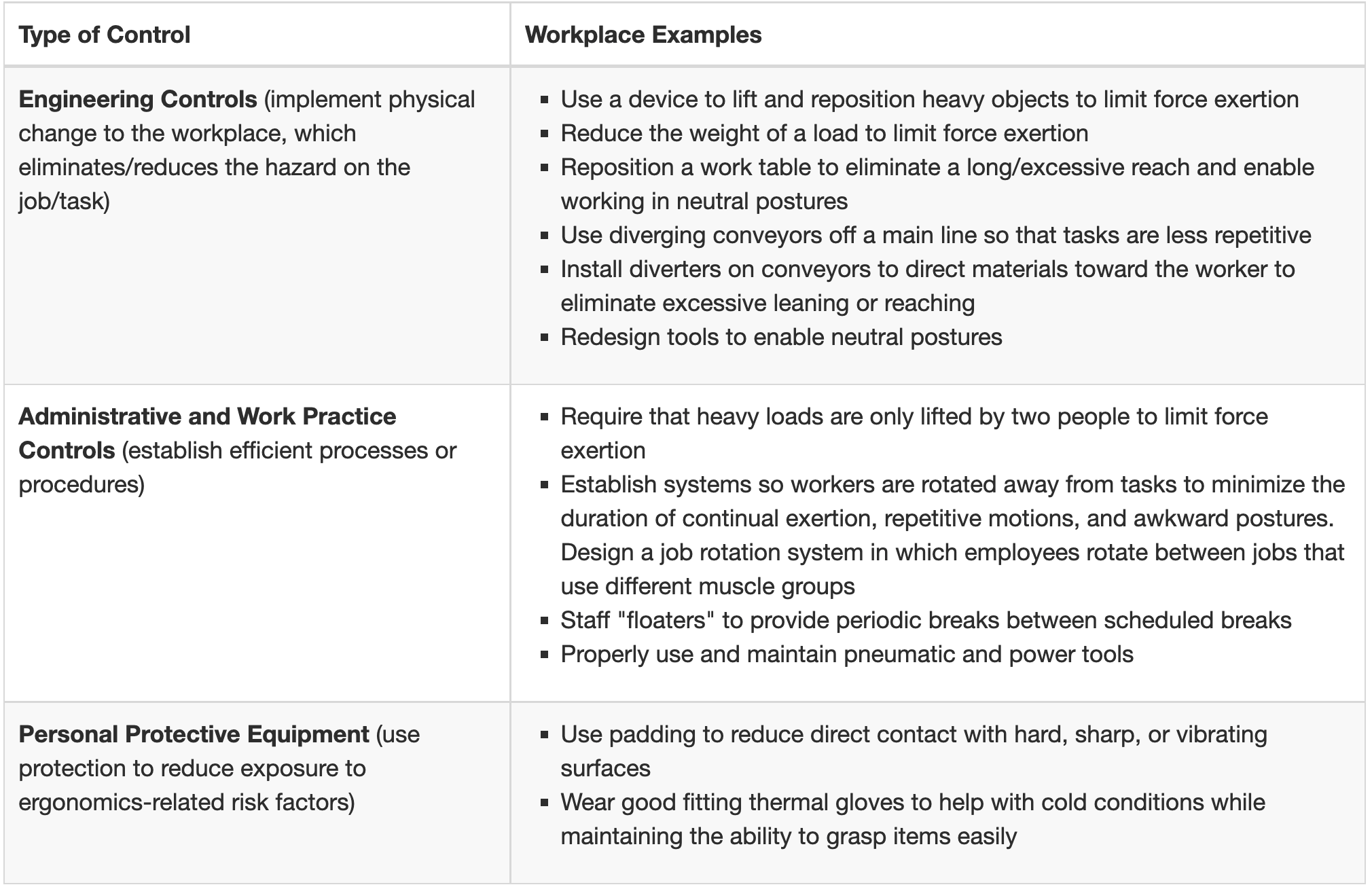Musculoskeletal injuries that affect muscles, nerves, blood vessels, ligaments and tendons, are among the most common workplace health issues. Repetitive motion, awkward positioning and overexertion can cause a variety of issues ranging from minor muscle stiffness to costly, long-term problems that can limit an employee’s movement and ability to work.
According to the Ergonomics Center at North Carolina State University, “MSDs account for almost 400,000 injuries per year and one-third of all workers compensation costs. The direct costs of MSDs are $20 billion a year and indirect costs (lost productivity, product defects, etc.) of an MSD case can be up to five times the direct costs.”
Yet, even employers who have robust safety programming, often aren’t aware or educated about the physical impact of certain job duties. They may consider introducing ergonomics – the practice of fitting a job to the capabilities and physical condition of a person to help lessen muscle fatigue – a costly investment they can’t make.
However, a growing body of research shows significant value of ergonomics at work that business owners can’t afford to ignore.
Cost vs. Benefits
The Washington State Department of Labor and Industries reviewed 250 case studies of companies that had implemented a strong ergonomics program to evaluate the impact.
The study found five key benefits realized by employers who practice ergonomics:
- A reduction in costs. About $1 out of every $3 spent on workers’ compensation claims can be attributed to Musculoskeletal Disorders (MSDs). In the review of businesses using ergonomic practices, the study found that there was a 59% reduction in MSDs, a 75% reduction in lost workdays and a 68% reduction in workers’ compensation costs.
- Increased productivity. The businesses saw a 25% increase in productivity after implementing their ergonomic program.
- Improved worker morale. As employees reduce fatigue and discomfort at their workplace, they are less likely to be absent or quit their jobs. The study found a 48% average reduction in employee turnover and a 58% average reduction in employee absenteeism.
- Improved product quality. When a job is physically taxing on a worker, they don’t tend to do their best work. It may be painful to complete the task the way they were trained to. The DLI study found a 67% average reduction in scrap and errors.
- A better company safety culture – Employees see and feel the benefits of an ergonomics program immediately and appreciate their employer’s commitment to their wellbeing. This results in increased compliance and commitment to the company’s safety policies overall.
So, what do these benefits mean to a business owner over the long run?
According to the Journal of Occupational and Environmental Medicine, over a 13-year period, the market performance of companies that integrated a culture of health and safety outperformed competitors by up to 325%.
Starting an Ergonomic Program
There are numerous training classes and webinars about how to implement an ergonomic program in just about any industry. The Occupational Safety and Health Administration (OSHA) states that to be effective an ergonomic program should include the following elements:
- Provide management support. Management should set objectives and communicate clearly and often with employees about these.
- Involve workers. Workers should be part of identifying problem areas and coming up with the solutions.
- Provide training. Everyone in the company should be educated about the benefits of ergonomics and the importance of reporting any symptoms of MSDs early.
- Encourage early reporting. This allows the employer to take action and improve conditions before the problem becomes costly and potentially long-term.
- Implement solutions.

- Evaluate Progress. Review the effectiveness of the steps that have been taken and make adjustments as needed.
Healthy employees are your most valuable asset. Creating and fostering a work environment that is committed to protecting the health and safety of employees and ensuring that they can do their jobs without pain, will lead to a happier, more engaged and committed workforce.

